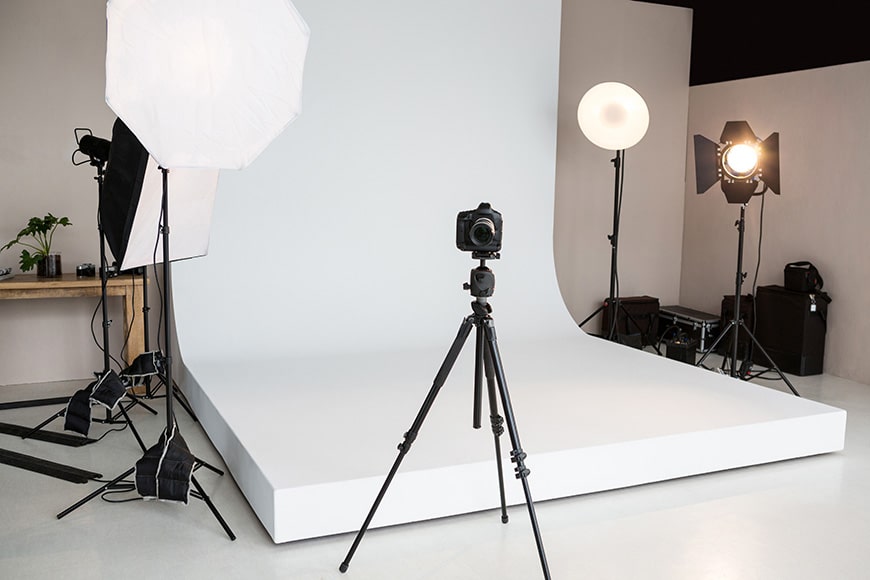Understanding What Is Split Lighting in Photography?
For professional photographers, mastering the art of lighting is essential, especially when it comes to defining the mood and character of a portrait. One of the most striking yet underutilized techniques is split lighting. But what is split lighting in photography? In this detailed article, we will delve deep into the nuances of this technique, explore its applications, and provide you with practical tips to implement it effectively.
Split lighting is a technique that illuminates one side of the subject's face while leaving the other side largely in shadow. This creates a dramatic effect that can enhance the features of your subject and add a sense of dimension and character to your portrait shots. Typically associated with **dramatic photography**, split lighting is used to create strong contrasts that provoke emotional responses from viewers.

The Essential Elements of Split Lighting
To effectively employ split lighting, understanding its basic components is crucial.
The Light Source
The position of your light source is what primarily defines split lighting. The light should be placed to the side of the subject, typically at a 90-degree angle. This creates a sharp division between light and shadows. The direction and distance from the subject will affect the intensity of the shadows and highlights. You can achieve favorable effects by experimenting with your light placement.
The Subject Orientation
The orientation of your subject also plays a key role in achieving compelling split lighting. Position your subject so that they are facing slightly away from the direction of the light. This typically involves adjusting their body or head until you see that one side is illuminated while the other remains shrouded in darkness.

Why Use Split Lighting?
Split lighting is not just a technique for aesthetic appeal; it serves practical purposes as well.
Characterization
When used effectively, split lighting can help underscore the personality or emotional state of your subject. It is particularly useful in portrait photography where depth and allure are desired. If your subject has notable facial features, split lighting can accentuate those features stunningly.
Dramatic Effect
In many genres of photography, from fashion to editorial, the ability to create depth and drama through lighting can help an image stand out. Split lighting creates a powerful visual narrative that can transform a simple portrait into an evocative piece of art.

How to Achieve Split Lighting
No matter your equipment, achieving split lighting is relatively straightforward. Here are some steps to effectively master the technique:
Equipment Needed
- Light Source: This can be a studio strobe, flash, or natural light.
- Reflectors (optional): Help manage light directions.
- Camera with manual settings for greater control.
Setting Up Your Shot
1. **Choose Your Light Source**: A powerful light source placed at a 90-degree angle to your subject is ideal for split lighting.
2. **Position Your Subject**: Face your subject slightly away from the light direction. This will help create the necessary shadow on the opposite side.
3. **Adjust Your Settings**: Play with your cameras settings to get the correct exposure. Keep in mind that you will be dealing with high contrast.
4. **Test and Refine**: Take a shot and analyze the output. Adjust the light and pose for optimal results.

Common Mistakes to Avoid
Even experienced photographers can encounter pitfalls when using split lighting. Here are common mistakes to avoid:
Lighting Too Close
If your light is too close to your subject, it can create unflattering harsh shadows. Make sure to keep an appropriate distance to maintain the dramatic effect without overwhelming the subject.
Ineffective Background Separation
Pay attention to your background. A distracting background can steal attention away from your subject. Use a backdrop that enhances your composition.
Neglecting Eye Catchlights
Catchlights are reflections in your subject's eyes that add life to a portrait. Ensure that your light positioning allows for natural catchlights, which can create an inviting feel even with the darker side of the face.
Split Lighting in Different Contexts
While often recognized for portraits, split lighting can be effectively utilized in various photography genres, and here's how:
Fashion Photography
In fashion photography, split lighting can be used to highlight textures and fabrics creatively. The dynamic contrast enhances the mood of the image and brings out the intricacies in clothing.
Product Photography
Strong contrasts in product photography can add a sense of luxury and sophistication. If you want to achieve high drama in product images, consider understanding what is split lighting in photography and how it can emphasize your products.
Fine Art Photography
For fine art photographers, split lighting can create thought-provoking visuals that invite questions and contemplation. The shadows can evoke feelings and lead the viewer through an emotional journey.
Inspiration from Masters
Many renowned photographers have effectively used split lighting in their work. Julia Margaret Cameron, for example, is famous for her striking portraits that utilize light and shadow beautifully. Similarly, modern photographers often experiment with split lighting to achieve unique and compelling compositions.
Tools and Resources
Investing in appropriate lighting tools can significantly improve your split lighting techniques. You may want to explore additional resources:
FAQs About Split Lighting
1. Can split lighting be used for outdoor photography?
Yes, utilizing natural light outdoors can create wonderful split lighting effects. Just make sure to position your subject accordingly in relation to the light source.
2. What are the best light sources for split lighting?
Softbox lights and similar modifiers can offer soft, even lighting while maintaining the contrast for split lighting. Ideally, use a strobe or flash for dramatic results.
3. Is split lighting suitable for all types of subjects?
While split lighting is great for many subjects, it's especially effective for portraits. However, exploring its uses in various contexts like fashion and product photography can yield interesting results.
As an Amazon Associate, I earn from qualifying purchases.

